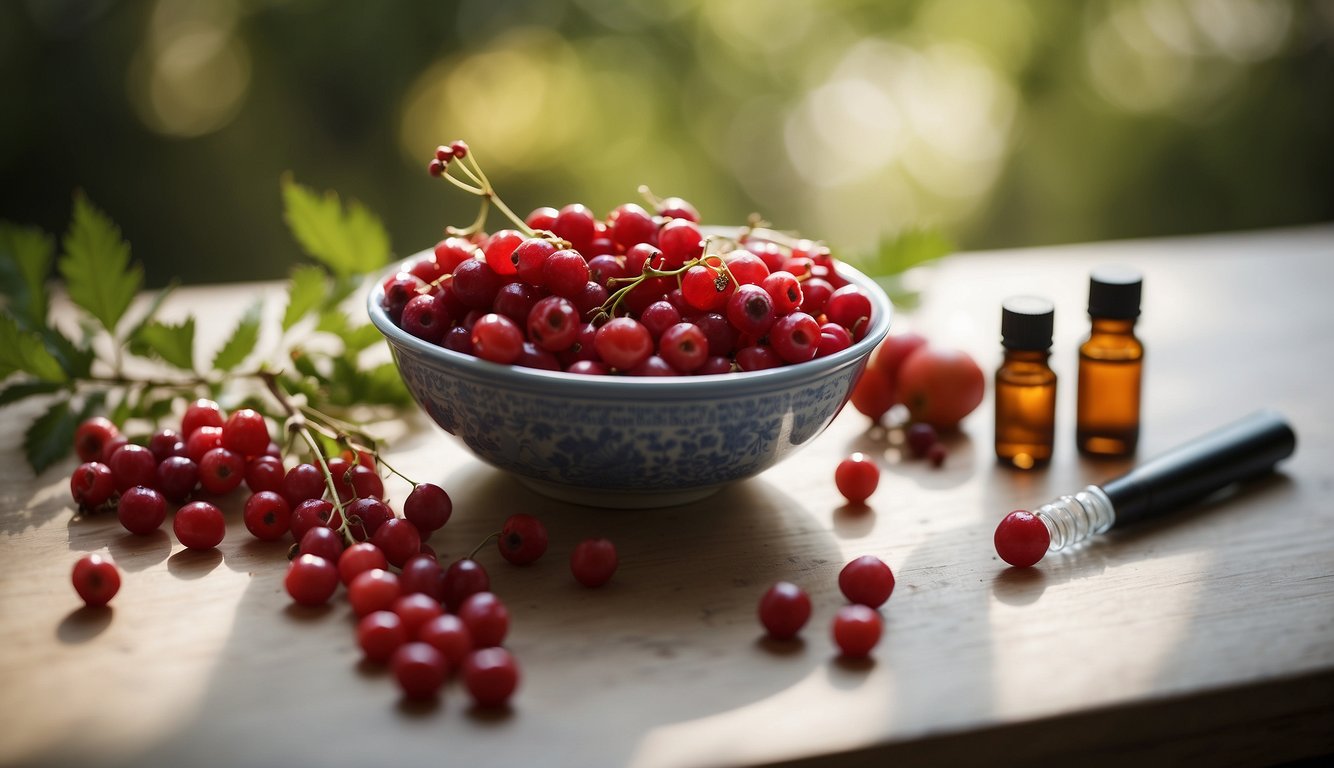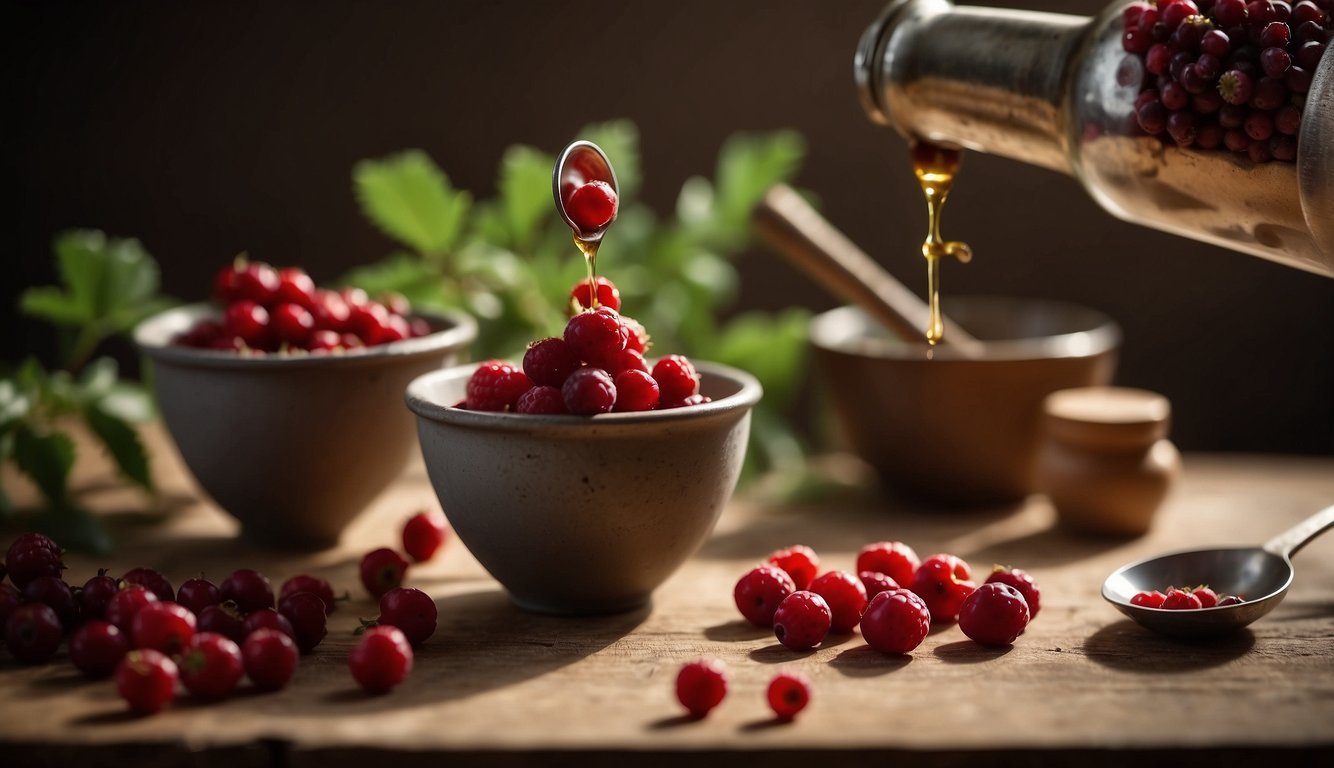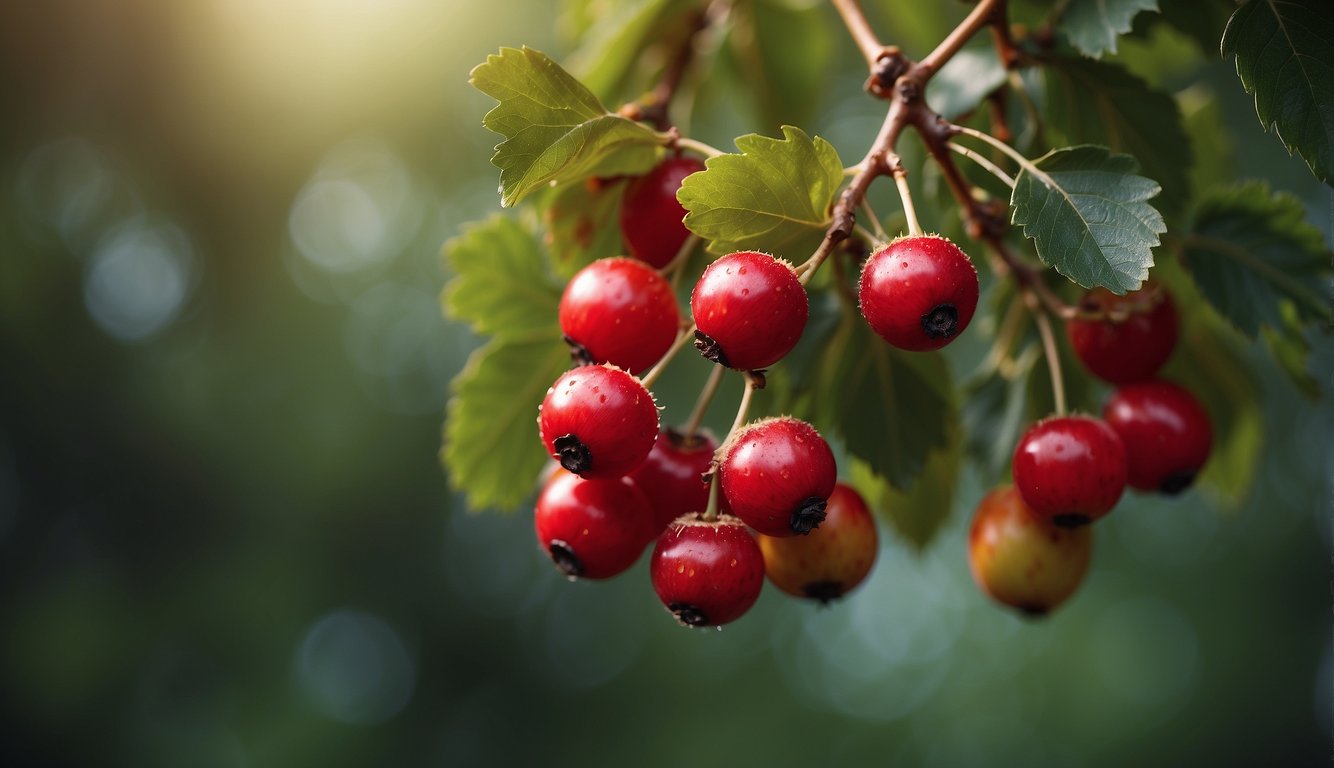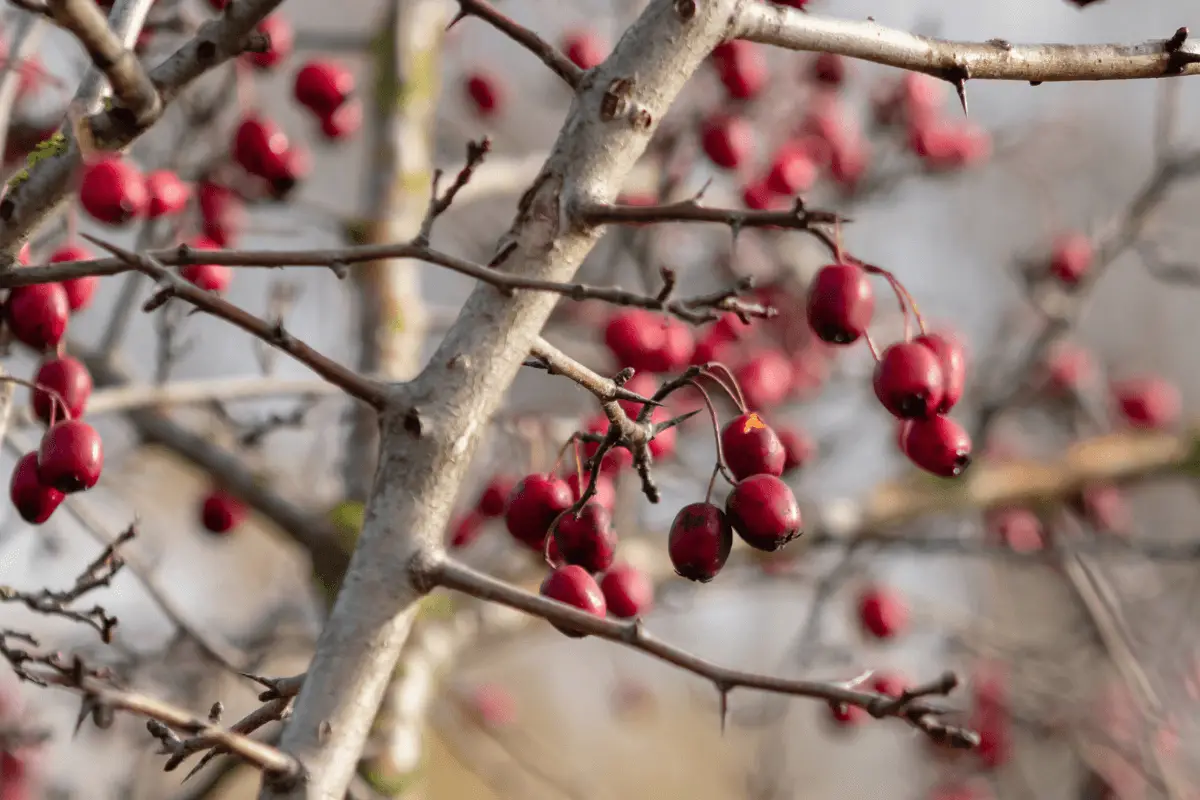TheHerbProf.com is a treasure trove of knowledge for those interested in natural healing and herbal remedies. The website is run by Paul Johnston MD. A naturopathic who has not only received extensive education in the field but also has personal experience in self-healing.
Hawthorn berries also know as common thorn apple are small, red fruits that grow on trees in the rose family. They have been used for centuries in traditional medicine to treat a variety of ailments, including digestive issues, heart problems, and skin conditions. Hawthorn is also known by its scientific name, crataegus, and is native to Europe, Asia, and North America.
Common thorn apple are packed with antioxidants and anti-inflammatory compounds that can help improve heart health, lower blood pressure, and reduce cholesterol levels. They are also rich in fiber, which can aid in digestion and promote healthy bowel movements. Additionally, hawthorn berries have been shown to have anti-anxiety and anti-depressant effects, making them a popular natural remedy for stress and mood disorders.
Overall, hawthorn berries are a versatile and nutritious fruit that can provide a range of health benefits. Whether eaten fresh, dried, or in supplement form, they are a great addition to any diet. In the following sections, I will explore the various ways in which hawthorn berries can be used to promote health and well-being.
Hawthorn Berries Historical Background

Hawthorn berries have a rich history that dates back centuries. In this section, I will explore the origin and species of hawthorn, as well as its traditional uses.
Origin and Species
Hawthorn, also known as Crataegus, is a genus of several hundred species of shrubs and trees in the rose family. It is native to temperate regions of the Northern Hemisphere in Europe, Asia, North Africa, and North America. The most commonly used species of hawthorn are Crataegus monogyna and Crataegus laevigata, which are native to Europe, and Crataegus oxyacantha, which is native to China.
Hawthorn Berries Traditional Uses
Hawthorn has been used for centuries for its medicinal properties. In ancient times, hawthorn was used to treat heart problems, digestion issues, and high blood pressure. Today, hawthorn is still used for these purposes, as well as for its ability to improve circulation and reduce anxiety.
Common thorn apple can be consumed in a variety of ways, including as a tea, jam, or jelly. They are also commonly used to make tinctures and supplements. Hawthorn tea is particularly popular, as it is believed to have a calming effect on the body and mind.
Overall, hawthorn berries have a long and rich history of traditional use for a variety of health purposes. While more research is needed to fully understand the benefits of hawthorn, it remains a popular natural remedy for many people.
Hawthorn Berries Botanical Characteristics
Plant Description
Hawthorn (Crataegus) is a genus of shrubs and small trees in the rose family (Rosaceae). There are hundreds of species of hawthorn, which are native to temperate regions of the Northern Hemisphere. Hawthorn is known for its thorny branches, which can grow up to 15 feet tall. The leaves of the hawthorn tree are small and lobed, with a glossy green color. Hawthorn flowers bloom in the spring, producing small white or pink flowers that grow in clusters.
Fruit Profile
Hawthorn berries are the fruit of the hawthorn tree. The berries are small, round, and red, with a slightly sour taste. Common thorn apple contain seeds, which are also edible. Hawthorn berries are commonly used in traditional medicine to treat heart and digestive problems. The berries are also used to make jams, jellies, and syrups.
Common thorn apple are not toxic, but the seeds contain cyanide and should not be consumed in large quantities. Hawthorn berries are also known to interact with certain medications, so it is important to consult with a healthcare provider before consuming hawthorn berries or supplements.
Common thorn apple is a genus of shrubs and small trees in the rose family, native to temperate regions of the Northern Hemisphere. Hawthorn flowers bloom in the spring, producing small white or pink flowers that grow in clusters. Hawthorn berries are small, round, and red, with a slightly sour taste. The berries contain seeds, which are edible but should not be consumed in large quantities due to their cyanide content. Common thorn apple are commonly used in traditional medicine to treat heart and digestive problems, but it is important to consult with a healthcare provider before consuming hawthorn berries or supplements.
Hawthorn Berries Health Benefits

Hawthorn berries have been used for centuries as a natural remedy for various health conditions. They are packed with nutrients and bioactive compounds, making them a great addition to a healthy diet. In this section, I will discuss some of the key health benefits associated with Common thorn apple.
Common thorn apple Cardiovascular Support
Common thorn apple have been shown to have a positive effect on cardiovascular health. They can help lower high blood pressure, reduce cholesterol levels, and improve blood flow. Studies have also found that hawthorn can be effective in treating congestive heart failure, angina, and other heart-related conditions. Hawthorn berries contain flavonoids and proanthocyanidins, which have anti-inflammatory and antioxidant properties that help protect the heart and blood vessels from damage.
Hawthorn Berries Metabolic Effects
Common thorn apple may also have metabolic effects. They can help regulate blood sugar levels, improve insulin sensitivity, and reduce the risk of type 2 diabetes. Some studies have found that hawthorn can also lower triglycerides and improve overall lipid profiles. These effects may be due to the presence of procyanidins, which can help improve insulin sensitivity and reduce inflammation.
Common thorn apple Antioxidant Activity
Common thorn apple are also rich in antioxidants, which can help protect the body from free radical damage. Free radicals are unstable molecules that can cause cellular damage and contribute to the development of chronic diseases. Hawthorn berries contain flavonoids, such as quercetin and rutin, which have strong antioxidant properties. These compounds can help reduce inflammation and protect against atherosclerosis.
Common thorn apple are a nutrient-dense food that can provide a range of health benefits. They can help support cardiovascular health, regulate blood sugar levels, and protect against oxidative stress. Incorporating hawthorn berries into your diet can be a simple and effective way to improve your overall health and wellbeing.
Hawthorn Berries Nutritional Content

Hawthorn berries are a rich source of essential nutrients, including vitamins and minerals, making them a valuable addition to a balanced diet.
Vitamins and Minerals
These berries are particularly high in vitamin C, an important antioxidant that supports immune function and skin health. Additionally, Common thorn apple contain calcium, magnesium, and iron, which are essential for maintaining strong bones, muscle function, and overall well-being.
Common thorn apple Dietary Fiber and Protein
Common thorn apple are also a good source of dietary fiber, which aids digestion and helps regulate blood sugar levels. Furthermore, they provide a moderate amount of protein, contributing to overall nutrient intake. Incorporating hawthorn berries into your diet can help diversify your nutrient intake and support overall health.
Culinary Uses

As an edible fruit, Common thorn apple have a tart and slightly sweet flavor that makes them a versatile ingredient in many culinary preparations. Here are some ways to prepare and use hawthorn berries in your cooking:
Preparing Hawthorn Berries
Hawthorn berries are usually harvested in the fall when they are ripe. Before using them in recipes, you need to remove the stems, leaves, and seeds. You can do this by washing the berries and then cutting them in half with a sharp knife. Use a spoon to scoop out the seeds and discard them along with the stems and leaves.
Recipes and Pairings
Hawthorn berries can be used to make a variety of jams, jellies, and teas. They are also a popular ingredient in dietary supplements due to their potential health benefits. Here are some recipes and pairings to try:
- Hawthorn Berry Jam: To make hawthorn berry jam, combine fresh Common thorn apple with sugar and lemon juice in a saucepan. Cook over medium heat until the mixture thickens and reaches the desired consistency. Pour the jam into sterilized jars and let it cool before storing in the refrigerator.
- Hawthorn Berry Tea: To make hawthorn berry tea, steep dried Common thorn apple in hot water for several minutes. You can also add other herbs or spices like ginger, cinnamon, or cloves for added flavor.
- Hawthorn Berry Salad Dressing: Use hawthorn berry puree as a base for a tangy salad dressing. Combine the puree with olive oil, vinegar, honey, and Dijon mustard for a delicious and healthy dressing.
Common thorn apple can also be paired with other fruits like apples, pears, and cranberries to create delicious and nutritious dishes. They are a great addition to smoothies, baked goods, and other desserts as well.
Potential Side Effects and Interactions

Hawthorn berries are generally safe when consumed in moderation. However, like any other supplement or medication, they can cause side effects and interact with other drugs or conditions. It is always best to consult with a healthcare provider before starting any new supplement or medication regimen.
Adverse Reactions
Some people may experience adverse reactions to Common thorn apple, such as dizziness, nausea, and headache. These symptoms are usually mild and go away on their own. However, if they persist or worsen, it is important to stop taking hawthorn berries and seek medical attention.
In rare cases, hawthorn berries can cause an allergic reaction. Symptoms of an allergic reaction may include hives, itching, difficulty breathing, and swelling of the face, lips, tongue, or throat. If you experience any of these symptoms, stop taking hawthorn berries immediately and seek emergency medical attention.
Medication Interactions
Hawthorn berries can interact with certain medications, including digoxin and drugs that lower blood pressure. If you are taking any medications, it is important to talk to your healthcare provider before taking hawthorn berries to avoid any potential interactions.
Special Populations
Pregnant or breastfeeding women should avoid taking hawthorn berries, as there is not enough research to determine their safety during pregnancy or lactation. People with heart disease or any other medical condition should also consult with their healthcare provider before taking Common thorn apple.
Common thorn apple have potential health benefits, but they can also cause side effects and interact with certain medications. It is important to consult with a healthcare provider before taking hawthorn berries, especially if you are pregnant, breastfeeding, or have any medical conditions.
Supplementation and Dosage

As with any supplement, it is important to follow the recommended dosage to avoid any adverse effects. Hawthorn berries can be consumed in different forms such as extracts, supplements, or even as a tea. In this section, I will discuss the different forms of hawthorn berry supplementation and the recommended dosages.
Extracts and Supplements
Hawthorn berry extracts and supplements are commonly found in health food stores and online retailers. These supplements come in different forms such as capsules, tablets, or liquid extracts. It is important to choose a reputable brand and to follow the recommended dosage on the label.
Recommended Dosages
The recommended dosage for hawthorn berry supplements depends on the form of supplement you use and the condition you use it to treat. One common use of the herb is to reduce the symptoms of heart failure. For these patients, the safe recommended dose ranges from 160 milligrams to 900 milligrams daily of a supplement containing 2-3% flavonoids and 18-20% oligomeric procyanidins.
For general cardiovascular health, a daily dose of 300-600 milligrams of hawthorn berry extract is recommended. It is important to note that the effects of hawthorn berry supplementation may take several weeks to become apparent, so it is important to be patient and consistent with the recommended dosage.
Consult with a Doctor
If you are considering taking hawthorn berry supplements, it is important to consult with a doctor first, especially if you are taking any other medications. Hawthorn berry supplements may interact with certain medicines such as beta-blockers, calcium channel blockers, and nitrates. A doctor can advise you on the appropriate dosage and any potential interactions with your current medications.
Common thorn apple supplementation can be a safe and effective way to support cardiovascular health. It is important to follow the recommended dosage and to consult with a doctor before starting any new supplement regimen.

Hawthorn Berries and TheHerbProf.com: A Berry Good Match!
Hawthorn Berry Bonanza: At TheHerbProf.com, we’re all about hawthorn berries! We delve into their heart-healthy benefits and their role in herbal medicine.
Herbal Highlights: Learn how Common thorn apple can boost your herbal routine. They’re not just a fruit; they’re a wellness wonder!
Culinary Creations: Common thorn apple in the kitchen? Absolutely! We share sweet and savory recipes that bring out the best in hawthorn berries.
Health and Wellness: We’re all about health and wellness, and Common thorn apple are a key part of this mission. They’re packed with antioxidants and other health-promoting compounds.
Community Connection: Join our community of hawthorn berry enthusiasts! Share your journey, learn from others, and make some new friends.
So, whether you’re a hawthorn berry buff or just starting your herbal journey, TheHerbProf.com is your trusty companion. Dive in, explore, and stay healthy!
References:
Little Herb Encyclopedia, by Jack Ritchason; N.D., Woodland Publishing Incorporated, 1995
The Ultimate Healing System, Course Manual, Copyright 1985, Don Lepore
Planetary Herbology, Michael Tierra, C.A., N.D., Lotus Press, 1988
Handbook of Medicinal Herbs, by James A. Duke, Pub. CRP Second Edition 2007
The Complete Medicinal Herbal, by Penelope Ody, Published by Dorling Kindersley
Before You Go – Check the Following Articles!
Frequently Asked Questions – Hawthorn Berries

What are the health benefits of consuming hawthorn berries?
Hawthorn berries have been used for centuries to support cardiovascular health. They are rich in antioxidants, which can help protect against free radical damage. Hawthorn berries may also help improve blood flow and circulation, reduce inflammation, and support healthy digestion. Some studies have even suggested that hawthorn berries may help lower cholesterol levels and improve heart health.
How do hawthorn berries affect blood pressure levels?
Hawthorn berries may help lower blood pressure levels by relaxing blood vessels and improving blood flow. They may also help reduce inflammation and oxidative stress, which can contribute to high blood pressure.
Can you provide recipes that include hawthorn berries?
Hawthorn berries can be used in a variety of recipes, including teas, jams, and syrups. To make a hawthorn berry tea, simply steep 1-2 teaspoons of dried Common thorn apple in hot water for 10-15 minutes. For a hawthorn berry syrup, combine 1 cup of hawthorn berries with 1 cup of water and 1 cup of sugar in a saucepan. Simmer for 20-30 minutes, then strain and store in a jar.
Are there any adverse effects associated with hawthorn berry consumption?
Hawthorn berries are generally considered safe for most people when consumed in moderation. However, some people may experience mild side effects such as dizziness, nausea, or digestive upset. If you experience any adverse effects, stop consuming Common thorn apple and consult with a healthcare professional.
What are the contraindications for taking hawthorn berry supplements?
Hawthorn berry supplements may interact with certain medications, including blood pressure medications, heart medications, and some antidepressants. If you are taking any medications, consult with a healthcare professional before taking hawthorn berry supplements.
How do hawthorn berries influence cardiovascular health?
Hawthorn berries may help support cardiovascular health by improving blood flow and circulation, reducing inflammation and oxidative stress, and supporting healthy cholesterol levels. They may also help reduce the risk of heart disease and other cardiovascular conditions. However, more research is needed to fully understand the effects of hawthorn berries on cardiovascular health.


